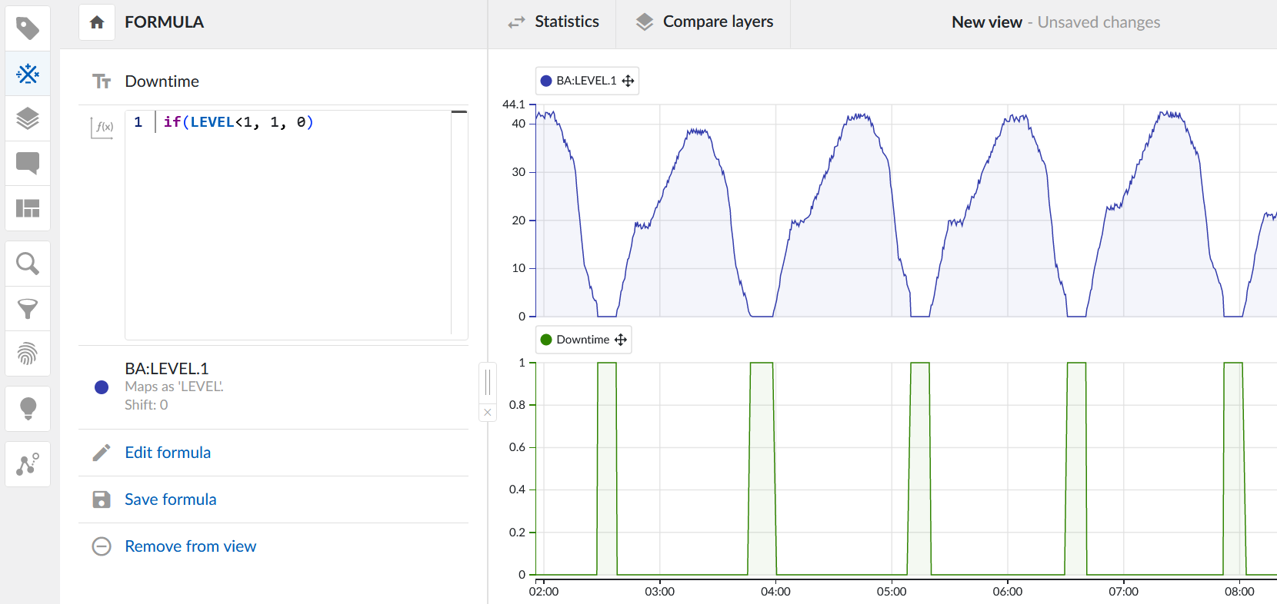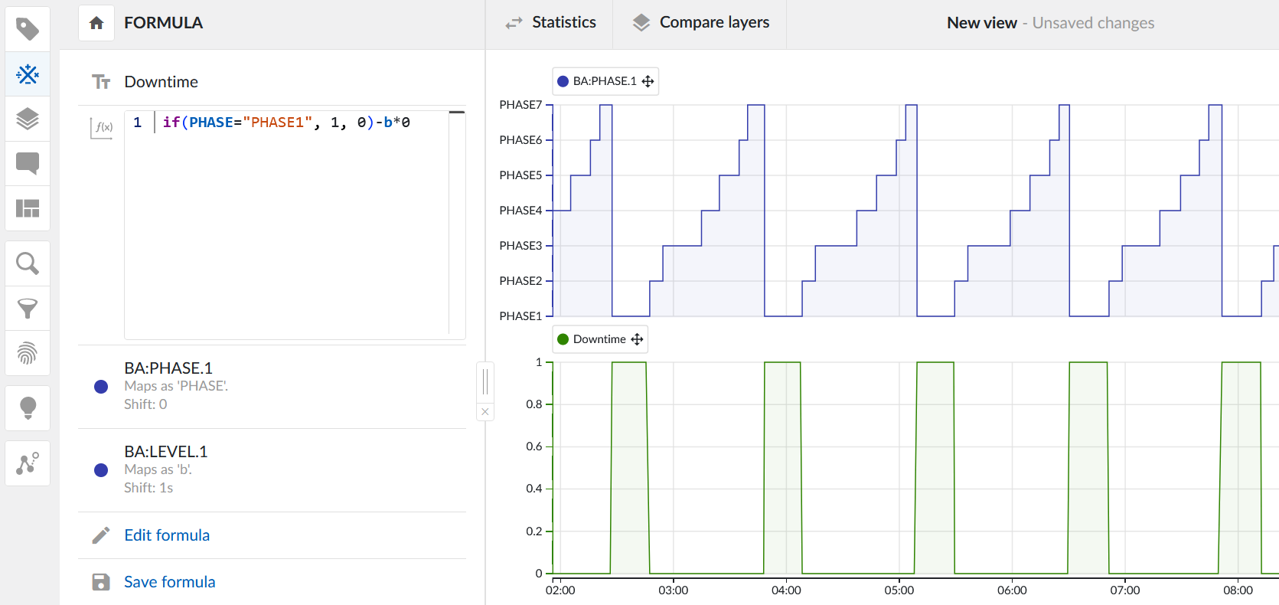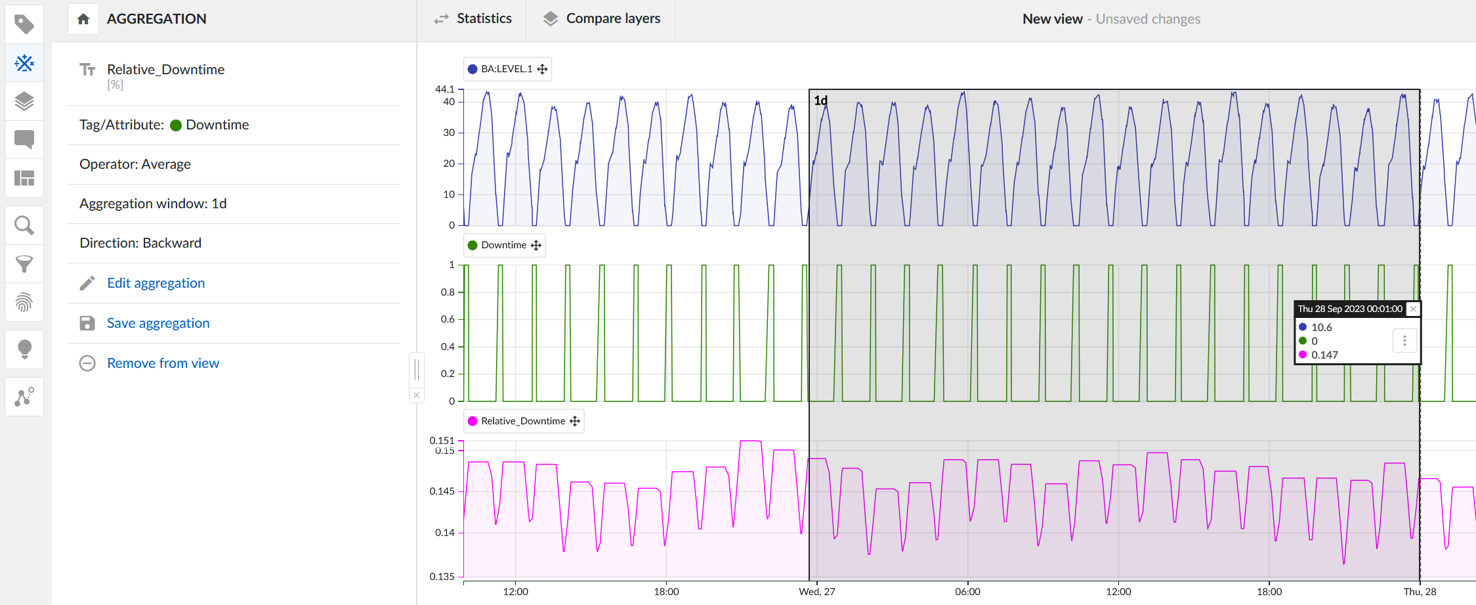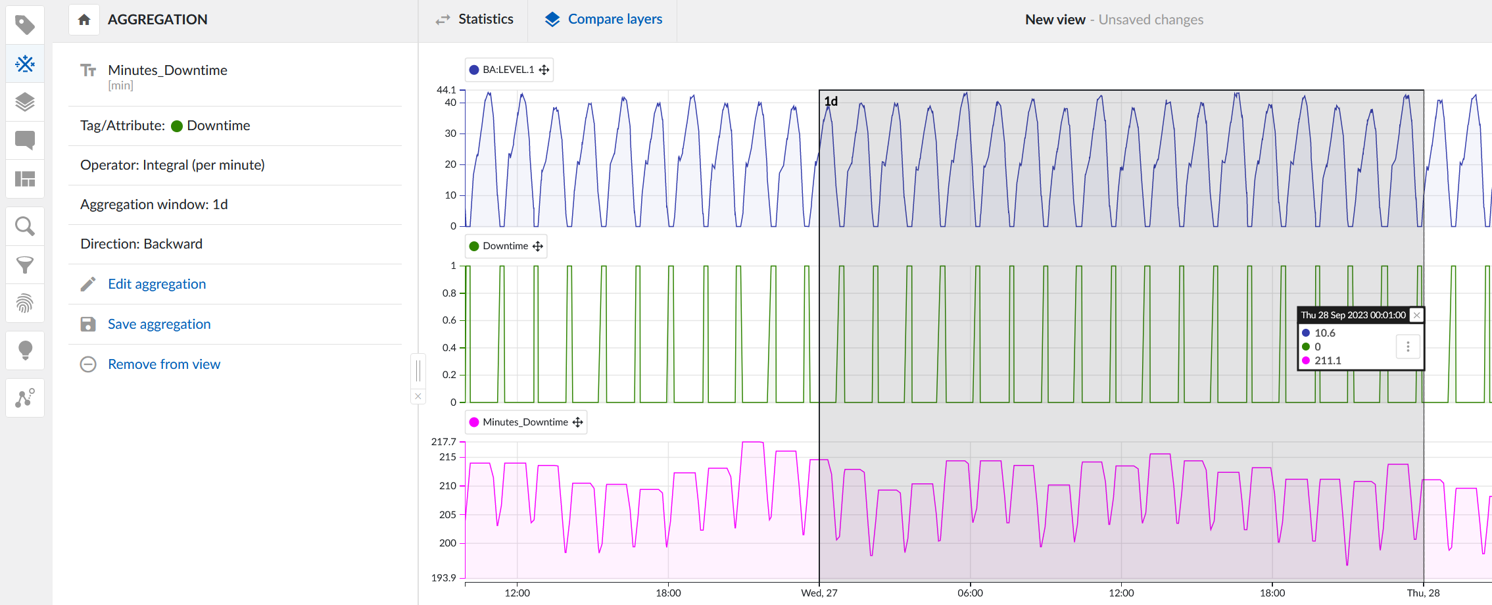Determine downtime or operating time by creating a new tag
Determining downtime and uptime by creating a new tag is a useful practice for a variety of purposes, including maintenance planning, process optimization, and performance evaluation. Here are some examples of how this can be used in practice:
Preventive maintenance: In chemical plants, tagging equipment downtime improves preventive maintenance planning.
Bottleneck detection: Measuring equipment uptime reveals process bottlenecks for improved efficiency.
Batch Optimization: Tagging batch start and end times can improve production schedules for higher throughput.
Downtime and uptime tags facilitate cost analysis, helping plants reduce costs associated with interruptions.
Formula for analog/ discrete tags (downtime)
if(LEVEL<1, 1, 0)
Variable mapping:

LEVEL = level tag (no shift)
Formula for string tags (downtime):
if(PHASE="PHASE1", 1, 0)-b*0
Variable mapping:

PHASE = level tag (no shift)
b = any high-frequency analog tag (shift: 1s)
Here we use the following trick: Stepped formula tag
Create a new Tag Builder Aggregation with the following settings:
Operator: AVERAGE for relative value or INTEGRAL (per minute) for time in minutes
Direction: BACKWARD,
Aggregate per: 24 HOURS
Remember that the aggregation has a moving window and each value refers to the last 24 hours.
Set the focus chart to the period you are interested in and open the Statistics or Compare Layers table.
The Average (AVG) parameter shows the relative value and the Integral (/d) parameter shows the downtime or uptime in days.


Use the trick of reporting on daily, monthly or yearly periods with TrendMiners time tags (TM_day, TM_month, TM_year) to capture downtime or uptime.
Create a value based search and look for e.g. TM_month "constant".
The next step is to add calculations to the search results.
The Average (AVG) parameter shows the relative value and the Integral (/d) parameter shows the downtime or uptime in days.
The values are calculated for all periods at once and can easily be exported to Excel.